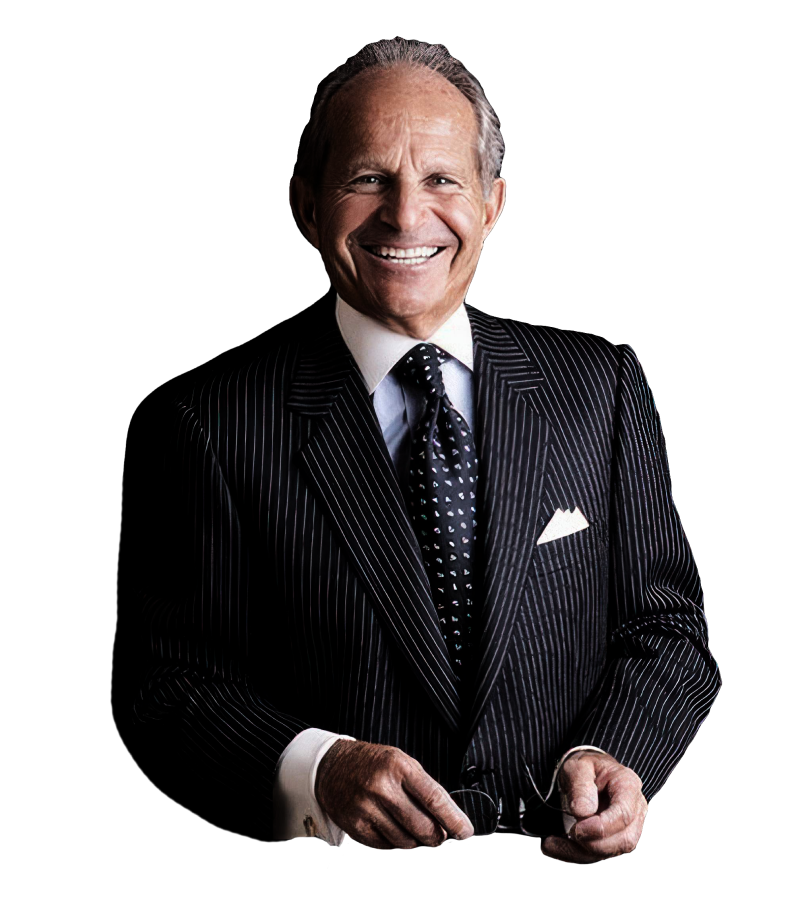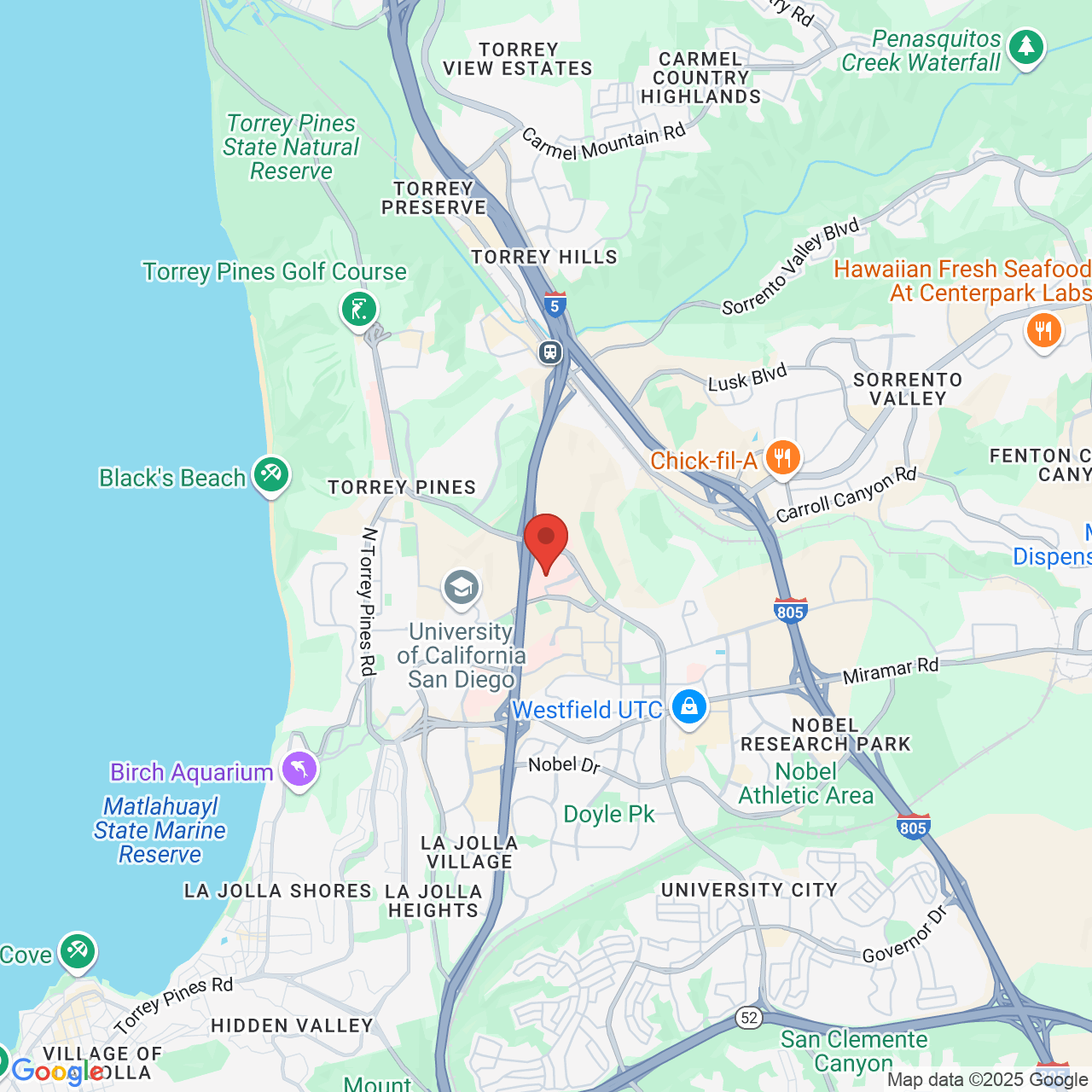Breast Augmentation La Jolla, San Diego
Breast augmentation is the most popular plastic surgery procedure for women in San Diego and the United States due to loss of breast size and firmness. There are few parts of a woman’s body that can affect self-esteem more than her breasts. Unfortunately, the breasts suffer more from age and motherhood than any other body part.
There are many breast augmentation options in San Diego for women searching for a more feminine physique, and for men to regain confidence with a more masculine presence. At his La Jolla practice, Dr. Robert Singer performs breast reduction, breast lift, and breast augmentation for San Diego and the surrounding areas. He will customize your breast augmentation procedure to fit your needs and desired outcome.
Dr. Singer will help you decide which procedures and treatments will allow you to achieve the results you desire. Call our La Jolla, San Diego Plastic Surgery Centre today for a consultation at 858-455-0290.
What to Expect During Your Breast Augmentation Consultation in La Jolla Our Beautiful San Diego offers A Respite From Busy Days
Are you contemplating breast augmentation surgery in San Diego? Schedule a consultation with Dr. Robert Singer because the relationship with your plastic surgeon is important. It is critical for you to understand the risks, the rewards, and everything about your plastic surgeon and the support team.
At our San Diego Center, you will receive professional attention from the instant you contact us. When you call, we will provide needed information and schedule a consultation appointment to serve you further.
Upon arrival at our La Jolla office, you will meet Dr. Singer and his staff. Our office is far from the stark, clinical medical offices of many. Here you are surrounded by soothing colors, interesting works of art and very comfortable seating. Once you meet with Dr. Singer for the actual consultation, you will be given a thorough physical exam and asked your reasons for breast augmentation.
Dr. Singer will show you before and after photos of patients with similar anatomy who had the same concerns as you.
You and Dr. Singer will design a personalized breast augmentation plan which will satisfy your unique body type. He will explain how to prepare for your surgery, what to expect during surgery and the healing process during your recovery.
He will give you plenty of time to voice your concerns and ask any questions. He will not rush you and will answer all your questions.
Suitable Candidates for Breast Augmentation
Women who:
- Have small or asymmetrical breasts
- Have droopy or sagging breasts
- Have breasts needing reconstruction
- Are in good health
- Do not smoke
- Understand the benefits and risks of breast augmentation
- Have reasonable expectations
“I absolutely LOVE Dr Singer and his entire staff! You can’t go wrong trusting your face or body with them. I called around to numerous surgeons offices before I finally decided as this was huge to me, I hated that thing. My first contact assured me Dr. Singer was the BEST and darned if she wasn’t right! This was not the typical response to my questions as I called around mind you!!! I was sold by her enthusiasm and I couldn’t be happier.”
– Real Patient of Dr. Singer
Before & After Photos
Interested in a Breast Augmentation?
View our real patient results!
View our Real Patient Gallery
What to Expect from Breast Augmentation
Breast augmentation is an outpatient procedure done under general anesthesia.
We offer most approaches of breast augmentation and incision placement, as well as several FDA-approved implants with silicone and saline. The modern procedures we use allow us to fashion incisions in inconspicuous locations, either in the crease of the armpit, peri-areolar (an incision under the nipple at the areola where the color changes naturally) or inframammary (under the crease of the breast).
We also implement three choices for placement of your implants:
Sub-Fascial
A newer technique in which we insert the implant under a thin, but solid layer of connective tissue which shelters the pectoralis major muscle. With this technique, you get a support advantage of the sub-muscular technique without implant movement which causes your implants to shift when your muscles contract.
Sub-Glandular
The implant is inserted under the gland of the breast.
Sub-Muscular
We insert the implant under the muscle
After placement and positioning, Dr. Singer will close with sutures, and bandage your breasts. Sometimes he will place a surgical garment, helping your breasts to stabilize with the implants.
After surgery, you will be taken to a recovery room and monitored for a short period. Finally, we will release you into the care of an escort, who should drive you home and help you for at least 24 hours.
Breast Augmentation Adds volume with breast implants improves the feel and contourt
1 hour procedure
1-2 week recovery
96% realself.com
worth it rating
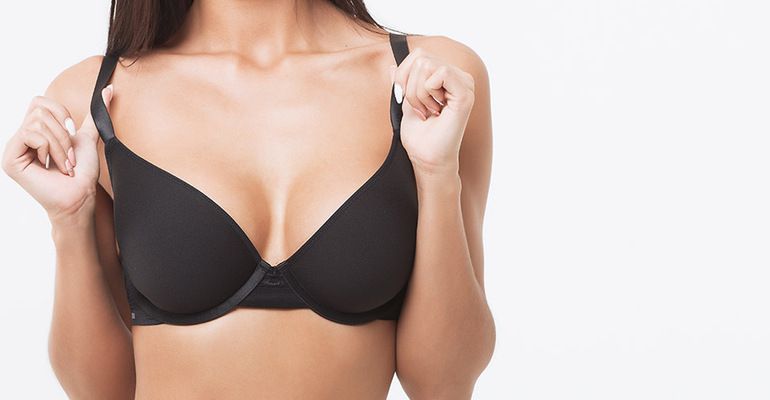
Breast lift Repositions sagging breast improves the shape and firmness
3 hour procedure
1-2 week recovery
95% realself.com
worth it rating
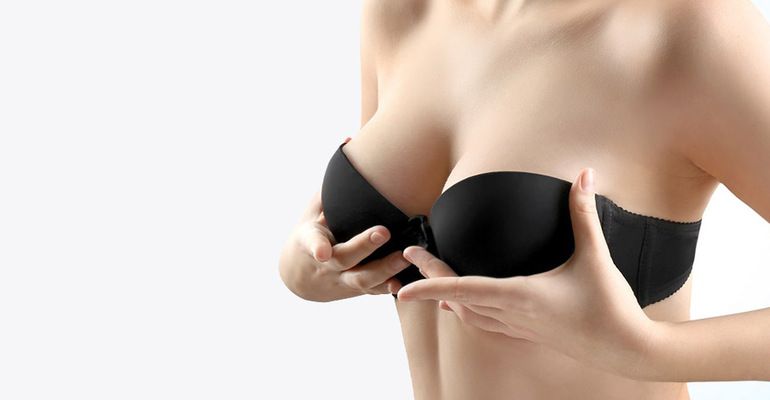
Types of Implants for Breast Augmentation
There are different types of implants. When you decide to get breast implants, you have many specific choices, not only regarding the size and type of material but also regarding shape. We have an extensive selection of implants that will fit your unique body type. We will discuss the advantages and disadvantages of different implants with you so you can make the optimal choice for your needs.
Saline breast Implants
Dr. Singer will fill saline breast Implants after insertion, which allows for a smaller incision. The ability to fill the implant after insertion will allow Dr. Singer to adjust the size during surgery. These implants are FDA-approved for women 18 and older.
Silicone Breast Implants
Silicone breast implants are believed to have a softer, more natural feel than saline. We recommend these implants for women with thin or little breast tissue. Silicone implants require a larger incision because they are intact with no filling required. These implants are FDA-approved for women 22 and older, although younger women may qualify for their use.
While not a frequent occurrence, saline and silicone implants may rupture. The FDA recommends women with silicone implants have an MRI every two years to determine if a rupture has occurred. When a silicone implant ruptures, there is no immediate leakage and no reduction in size making ruptures harder to detect. Because saline implants deflate soon after rupture occurs, it is easily detected.
"Gummy Bear" Breast Implants
Cohesive Gel Implants, also known as “gummy bear” implants, may rupture, but it’s silicone filling will not leak out. The gel of these implants is similar in consistency to gummy bear candies, are less prone to leakage, and a rupture of the outer shell will not alter their shape or size. These implants also have a more natural, teardrop shape.
Textured vs. Smooth Implants
Implant shells can be smooth or treated with a finishing process which texturizes the outer surface. It’s important to know your breasts will feel natural if you have textured implants. The texture assists the implant’s adherence to the adjacent breast tissue to avoid rotation.
Textured Breast Implants
Textured implants are less disposed to capsular contracture – a problem which may occur over time after breast augmentation. In capsular contracture, a constricted scar will form about the implant, triggering the breasts to become too firm and sometimes distorted. Capsular contracture will require breast augmentation revision surgery.
Smooth Breast Implants
Implants with a smooth surface are less likely to ripple than textured implants. If a patient has little breast tissue, we opt for the smooth implant since rippling would be more of an issue.
When the breasts are re-contoured and enlarged with an implant, women often experience a renewed sense of their femininity and a substantial increase in self-confidence. Ideally, breast augmentation surgery, also called augmentation mammoplasty, lasts for a lifetime. No one, however, can guarantee the life cycle of an implant so implant replacement may be necessary.
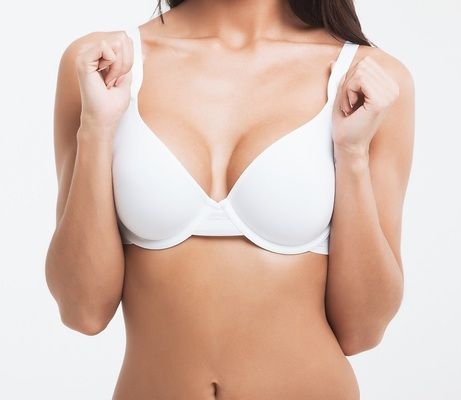
Recovery for Breast Augmentation
Taking It Easy in Sunny San Diego After Breast Augmentation
After surgery, you will feel sore and fatigued and need plenty of rest for a few days. Breast augmentation patients in San Diego are often able to return to work or school within a week. You should avoid strenuous activities using the upper body for up to one month. Refraining from physical strain is especially important for patients who have had sub-muscular or sub-facial placement. For the first week, you should take prescribed pain medication for your comfort and follow your recovery instructions. You will experience swelling but will see an immediate improvement in your breasts size and shape. Dr. Singer and our staff will closely monitor your progress during follow up visits, to make sure your recovery is proceeding well. Communicate with our office with questions or concerns during recovery.

“They took such good care of me so much so that I was never nervous or doubtful. When the time came I closed my eyes and I was out in no time. I woke up and they said feel them!” And I could not believe that it was over it was literally 3 hours and it felt like one second. I was glad I was like that. The work done was extremely detailed and it was exactly what I wanted, it was like if Dr. Singer read my mind.”
Choosing Your Breast Augmentation Surgeon in La Jolla, San Diego
Although breast augmentation is safer today than previously, your choice of a surgeon is critical. Sadly, any physician with a medical license can perform breast augmentation surgery in San Diego legally, even with having no specific training. It is important for your plastic surgeon to be qualified and have the right credentials. These should include board certification, and in good standing with the various medical boards. It also includes education, experience, and satisfied patients. Don’t forget the staff. Make sure the entire staff is professional, friendly and caring.
These will be the people to call while you heal. Make sure you are happy with the entire surgical center. It is important to investigate and visit with the surgeon one on one. You should visit the surgical center where the procedure will take place. Take your time and get informed. If you are a long time San Diego or La Jolla resident, or a new comer to the area, you’ve probably already heard about Dr. Singer. He has a stellar reputation, having been practicing in the area for decades, with wonderful results and a penchant for personal patient care.
Frequently Asked Questions
Will I be able to breastfeed after a breast augmentation?
Some women, who never had breast surgery, are naturally unable to breastfeed, and some variations of breast augmentation may make it more likely that you are unable to breastfeed, but most women with breast augmentations are able to successfully breastfeed. Breast implants pose no medical risk to your baby.
What if the implant ruptures?
Both silicone and saline breast implants can rupture or leak. If this should occur, treatment may require surgical removal of the implant and possible replacement. When a saline (salt water) breast implant leaks, it will usually deflate very quickly similar to what occurs when a balloon loses its air. Your breast will change in size or shape. It is less common for saline to leak slowly, although it can happen. When the saline leaks, the body absorbs it.
A rupture or leak of a silicone breast implants may occur very slowly, produce no symptoms or problems (called a silent rupture), and go unnoticed, because the gel is contained within the normally occurring fibrous tissue that forms around an implant. Sometimes the rupture is discovered only with on mammogram or an MRI or when an implant is replaced. It is possible, however, for the fibrous tissue to become inflamed or form additional internal scar tissue which can lead to:
- Pain, soreness or swelling in the affected breast
- Change in breast size or shape
- Lumps in the affected breast
- Softening or hardening of the affected breast
Implants have been thoroughly evaluated by the FDA and ruptured silicone breast implants aren’t thought to cause breast cancer, reproductive problems or connective tissue disease, such as rheumatoid arthritis.
What are the risks involved with breast augmentation surgery?
As with any surgery, there are risks associated with breast enlargement. Unfavorable scarring, asymmetry, changes in breast/nipple sensation, implant displacement, and rippling are all possible side effects. More serious complications which occur infrequently include: reactions to anesthesia, bleeding, and infection. Long term, potential problems include deflation or implant leakage requiring implant removal and possible replacement surgery as well as capsular contracture which occurs when the scar or capsule, which naturally forms around the breast implant begins to tighten, squeezing the implant and causing the breast to feel harder.
Is breast and nipple sensitivity affected by a breast augmentation?
Breast sensitivity may be increased, decreased or the same after surgery. Sensitivity varies greatly from person to person. After breast augmentation, you may find the nipples have decreased sensation, which generally returns. When it returns, the nipple complex may be hypersensitive before it returns to normal. In most patients, it takes 6-12 months before achieving the final level of sensitivity which may not totally return in some patients, no matter where the incision was made to insert the implant.
How long is the recovery period after breast enlargement surgery?
You should “take it easy” the day of your operation and the following days. Increase your activity as instructed. Depending on the kind of work you do, you may return to your job as soon as you are comfortable. If your work is fairly sedentary, you may go back to work in three to four days after surgery. Do not lift anything over ten pounds for three weeks. Exercise can typically be resumed three to four weeks following breast enlargement surgery.
Will a breast augmentation hurt?
You will be asleep during the procedure and feel no pain. After surgery, pain and discomfort can be easily relieved with prescribed medication and usually subsides in a matter of days. The greatest period of discomfort usually lasts about twenty four to forty eight hours. Thereafter, you should have less discomfort and less need for medication. Occasionally, it lasts a little longer. Implants placed in the submuscular position initially produce more discomfort than those placed in front of the muscle.
Who is a good candidate for a breast augmentation?
- Small breasted women, women with breasts that are unequal in size, women whose breasts are markedly smaller after pregnancy, and women whose breasts are sagging due to aging all may benefit from breast enlargement surgery.
- A healthy women over the age 18 (for Saline Implants)
- A healthy women over the age 22 (for Silicone Gel Implants)
What anesthesia will be used?
General anesthesia is commonly used in order to make the intra-operative portion of the procedure pain-free and as comfortable and pleasant experience as possible.
How long does the breast implant procedure take?
Cases may differ, but on average the surgery lasts one to two hours.
How long do breast implants last?
There is a myth that implants will last 10 years. There is no data to support that statement. We have seen patients with implants that are over 30 years old and still intact. You should realize that no one can guarantee the life cycle of an implant, that it may not last forever and it may not be a one time surgery. The implant manufacturers have limited warranties on the implants.
Are “gummy bear” implants better?
There are a number of new implants referred to as “gummy bear”, “jelly bean”, “form stable”, or “highly cohesive gel” implants that are available, but there are no long term results to show that they are significantly better or will last any longer than the current implants. They do feel firmer.
How do I choose the right size implant?
It depends on multiple factors: Individual anatomy, existing breast volume, breast dimensions of height, width and projection, ribcage width, chest shape, tissue thickness, desired outcome, and realistic expectations. There is no standardization of cup size. A 32 C and a 36 C are very different. Cup sizes vary from bra manufacturer to bra manufacturer. Even different styles from a manufacturer will vary in what they label a cup size. The best way to choose an implant size is to try on try on sizers in the office while wearing a tight t-shirt, bathing suit or leotard.
What are the options for breast implant placement?
There are two choices for breast implant placement: sub-glandular (under the breast tissue and in front of the chest muscle – the pectoralis muscle) or sub-muscular (under or partially under the chest muscle). The best location depends on many factors including: tissue thickness, weight, desired outcome, and individual anatomy. Each position has advantages and disadvantages:
Subglandular implant benefits:
- A shorter recovery time.
- Less discomfort initially.
- No distortion of the breast when the pectoralis muscle flexes.
- Mild preoperative sagging can be improved, especially if no breast lifting procedure is performed.
- Easier surgical procedure.
- Larger implants can be placed.
Subglandular implant disadvantages:
- The implant may be more visible.
- More visible rippling, especially in patients with a small amount of natural breast tissue.
- Generally, saline implants do not produce a good result in front of the muscle.
- Higher incidence of capsular contraction.
- “Bottoming out” in some patients.
- Some radiologists have more problems reading a mammogram with an implant in front of the muscle.
Submuscular implant benefits:
- Usually results in a better appearance for naturally small breasted women
- Less tendency for seeing ripples of the implant.
- A more natural feel to the breast especially in slender women who don’t have much of their own breast tissue.
- Less interference with mammograms, although most radiologists take additional views no matter where the implants are placed.
- Lower rate of capsular contraction.
- Less of a chance of “bottoming out” where the implant bulges at the lower aspect of the breast and the nipple and areolas tend to appear excessively elevated.
Submuscular implant disadvantages:
- Recovery usually takes a little longer and is more uncomfortable initially.
- There may be an “animation deformity”, which is a temporary distortion of the breasts when the pectoralis muscle is flexed. Body builders and weight lifters generally prefer implants in front of the muscle.
- It is harder to achieve cleavage in women who have widely spaced breasts.
- The implants often ride higher on the chest.
Actually, most patients who have breast augmentations today have breast implants placed in a combination or “dual plane” position. This approach has the same benefits and disadvantages of a total “submuscular implant”, but with a lesser tendency to ride high on the chest wall. The disadvantage as compared to a total “submuscular implant” is a higher tendency for bottoming out.
The ideal placement in any particular patient depends on their particular anatomy and understanding of the pros and cons of each approach. Your concerns should be discussed at the consultation.
Are saline implants as good as or better than silicone implants?
There are advantages and disadvantages of each type of implant. Both are utilized by surgeons across the country with satisfactory results. They are both approved for usage by the FDA. The best way to determine what the best implant is for you is to discuss the advantages and disadvantages of the various types of implants along with your concerns and personal preferences at a consultation.
What are the differences between smooth and textured mammary implants?
The surface of the outer shell of breast implants can be either smooth or textured. There are pros and cons of each. Smooth implants usually have thinner shells and move more freely in their pocket than their textured counterparts. Many plastic surgeons believe that the thinner shell allows smooth implants to feel more natural. Implants with smooth surfaces are also less likely to ripple. Textured implants were designed to lower the risk of capsular contracture, but whether it achieves that is open to debate. The textured implants may have a greater chance of leakage or deflation. One type of implant shape, known as the anatomical or tear-shaped implant, is only available with a textured surface, because this surface helps keep these contoured implants in position and diminishes the risk of rotation and distortion. Some of the differences of the implant surface characteristics depend on whether the fill material is saline or silicone gel.
What are the breast implants options?
The Food and Drug Administration (FDA) has approved both saline filled breast implants (for women 18 years and older) and silicone gel filled implants (for women 22 years and older). Both are basically shaped silicone envelopes that are filled with silicone gel or sterile salt water (saline). Silicone breast implants are filled either with cohesive gel or with “highly” cohesive gel, which are sometimes referred to as “gummy bear” implants due to their consistency. The outer surface may be smooth or textured.
What are the alternatives to a breast augmentation?
- Accept your breasts as they are.
- Wear a padded bra or an external prosthesis.
- There are no creams or ‘magic formulas” that are marketed to produce non-surgical breast enlargement that have ever been proven to work.
Are breast implants safe?
Breast implants are among the most tested of medical devices. No other medical device has been studied to the extent that breast implants have. Extensive studies of tens of thousands of women with breast implants have shown that both saline and silicone implants are safe. They do not produce a higher rate of cancer or autoimmune disease. After vigorous evaluation by the FDA, both are approved for cosmetic and reconstructive usage.
Why Choose Dr. Singer?
Dr. Singer has the respect of his peers and patients across San Diego and the surrounding Southern California area. He has helped thousands of San Diego residents with an eye for balance and beauty and the skills of an artist. Dr. Singer has been engaged in private practice in the La Jolla area of San Diego since 1976 and is now an internationally recognized plastic surgeon. You are in the best of hands with Board Certified Plastic Surgeon (American Board of Plastic Surgery) Dr. Singer.
Please learn more about Dr. Singer’s affiliations, memberships, awards, honors, and accomplishments. The full list and Dr. Singer’s curriculum vitae are available upon request.


